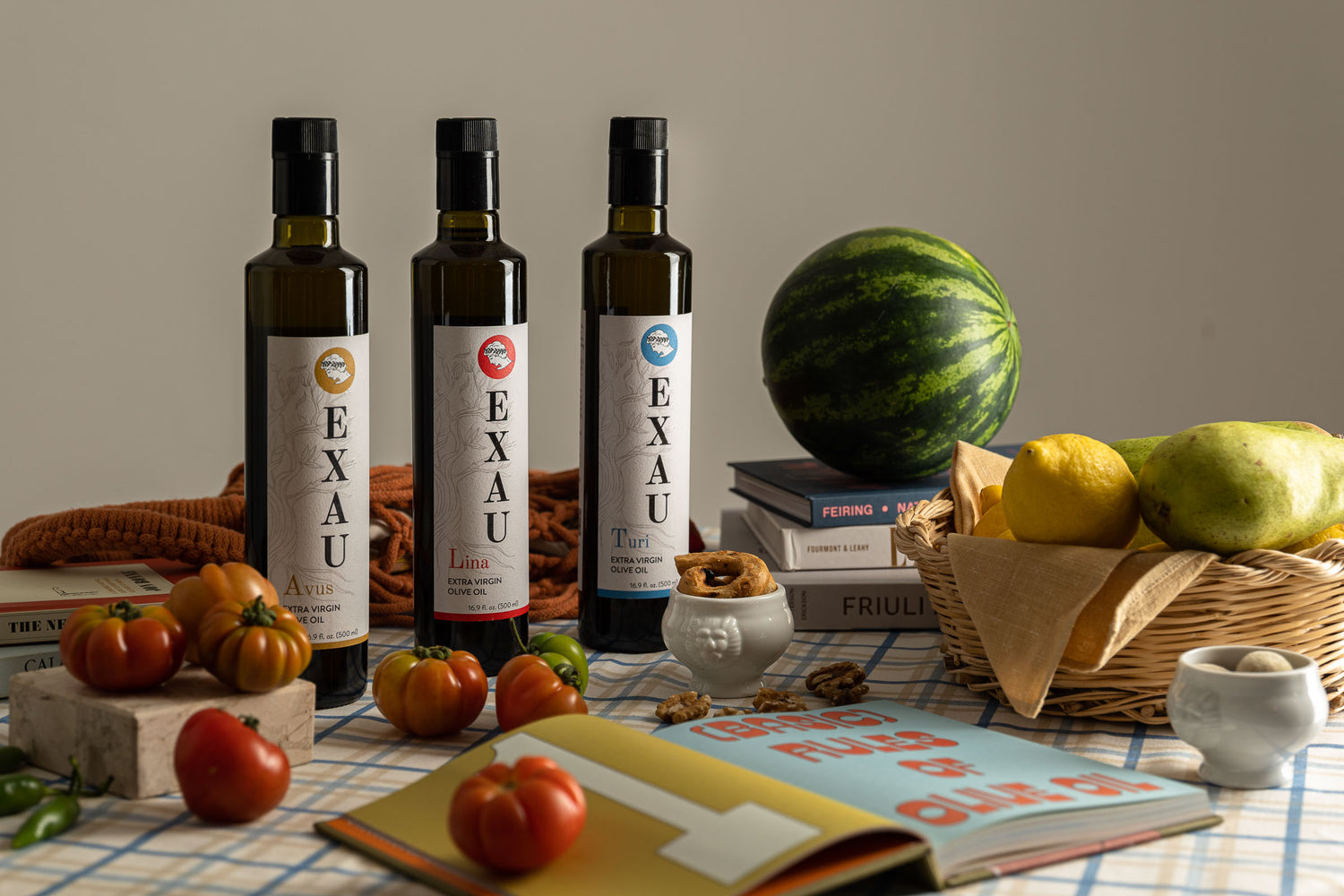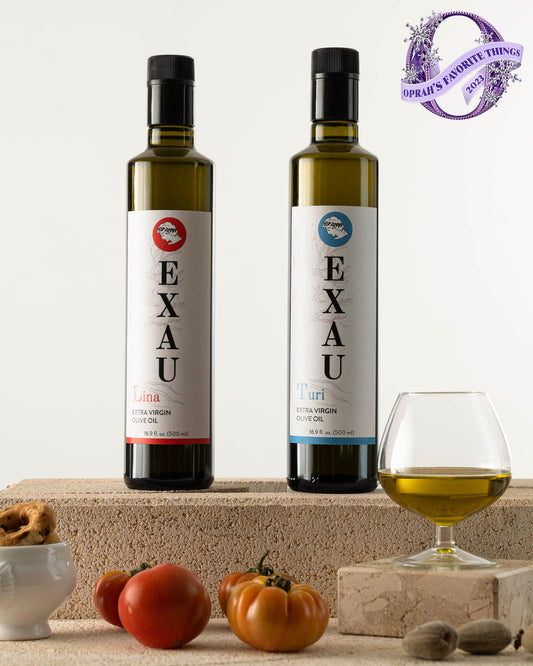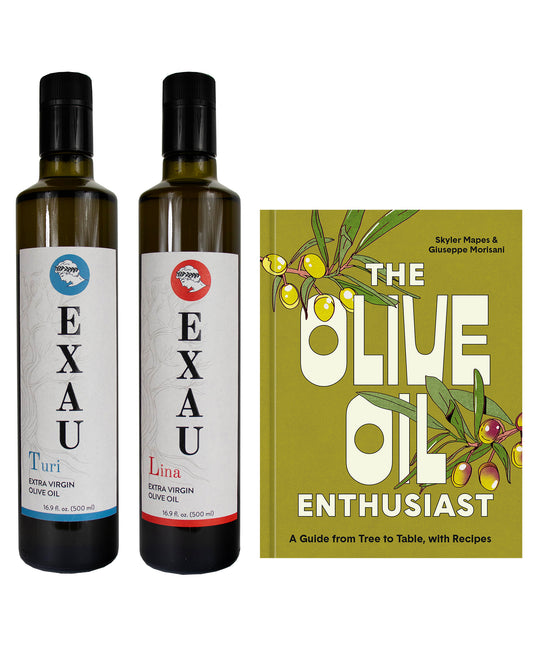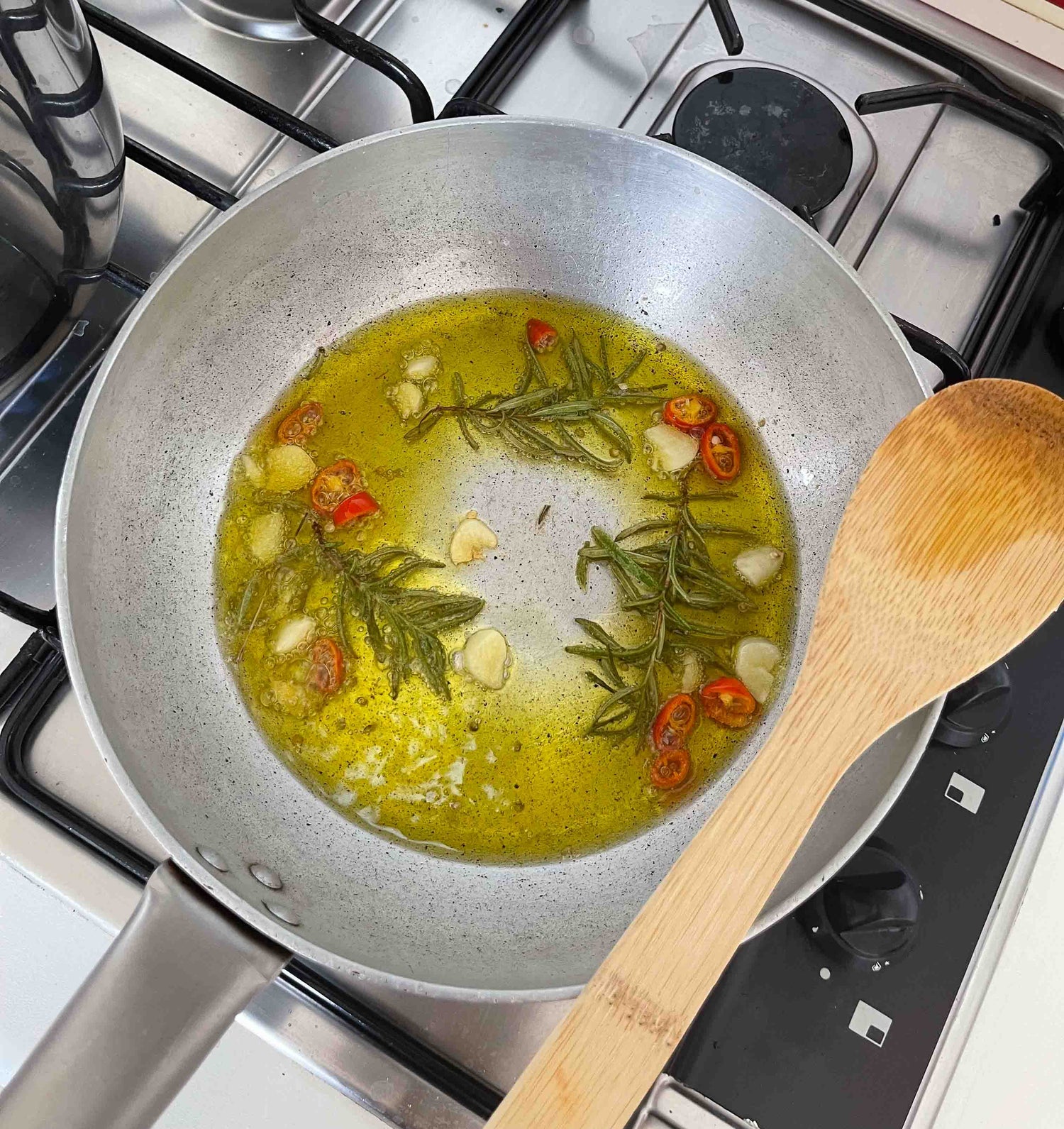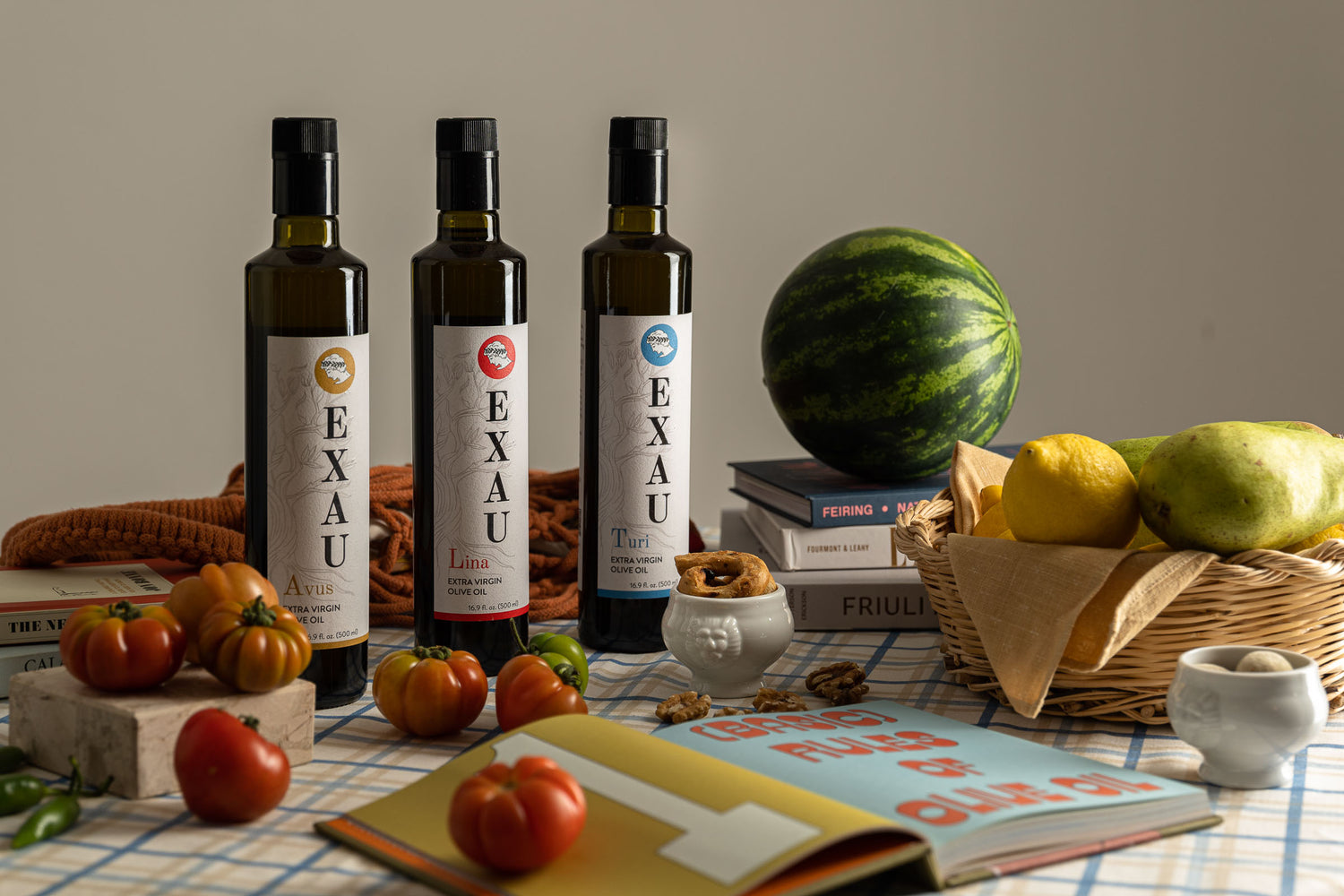Olive oil is made through a process known extraction which involves the harvesting, crushing, malaxation of the fruit then the centrifuging, separation, and filtration of the oil.
This flavorful and healthy product has been a staple in Mediterranean cuisine for centuries and is now enjoyed by people all over the world. In this article, we explore the fascinating process of olive oil production, from harvesting the fruit to extracting the precious oil.

Cultivars
Amazingly, there are over 2,000 different types of olive cultivars globally. Italy alone has over 650, making it the most diverse country in the world when it comes to our favorite fruit.
However, not all are used to produce oil. Many are reserved for curing and eating whole or turning into tamponade or for simply planting for beauty and aesthetic.
Regardless of the intended use, most of us agree that the olive tree is a gorgeous plant. And it has helped humans survive through food preservation and providing additional healthy fat and nutrients to many pastas, vegetables, and salads.
Different Grades
Before we can dive into how the product is made we need to talk about the different grades. These include ordinary, virgin, and extra virgin olive oil. The methods used to produce each product results in variations in flavor, color, and quality of the final product.
The most refined of the three is ordinary while the least refined and highest quality is extra virgin. Let's dive deeper into EVOO.
Related: Regular vs Extra Virgin, What's the Difference?

How is Extra Virgin Olive Oil Made?
Extra virgin olive oil is made from the first milling of the olive fruit and by extracting the oil while maintaining a temperature of less than 80.6° F (27° C) through strictly mechanical means.
This means producers cannot use of heat or chemicals during the milling or extraction process making EVOO an unrefined product. Here's a quick step-by-step of the production process:
Step 1: Harvest
Step 2: Transport
Step 3: Milling
Step 4: Decant and/or Filter
Step 5: Bottle and Label
Step 6: Transport
A Quick Lesson About Olive Trees
Extra virgin olive oil is only made with the fruit that grows on the olive tree (yes they're a fruit!). One of the most beautiful and ancient plants, can live for thousands of years, and are very drought tolerant.
They are notoriously slow growers and need 4 to 7 years to grow before they can yield any fruit.
For example, if you plant an olive tree in 2016 and it grows at a fairly normal rate you can expect to get a very small harvest beginning 2020, however, it’s likely the tree will not produce a full yield until 2022. As they grow older they produce more fruit.
All cultivars are different and have different harvesting schedules. In addition, not all farmers can harvest their trees every year. Some only produce an abundance of fruit every 2 years.
The Smithsonian writes regularly about agricultural findings, here’s a piece about a tree between 4,000-5,000 years old! How’s that for healthy. Read more about these amazing trees here and here.
How Is Olive Oil Made?
*Read the International Olive Council’s complete standards for EVOO here*
Step 1: Harvest the Fruit
The first step in producing high-quality extra virgin olive oil is harvesting the fruit, this step is crucial because it’s one of the defining factors of an extra virgin vs regular olive oil.
In Italy, harvest season starts in September and ends in December. A day picking fruit begins at sunrise, (approx. 6:00 am in early fall) and lasts until sunset or until the daily goal is met.
It’s not uncommon for farmers to harvest at night in order to get the harvest in. We only harvest for 6 hours at a time in order to keep the quality of our product high.
Larger companies usually have teams of people out picking the fruit using large machines. This brings us to a very important topic.
How to Pick Olives
There are quite a few options for picking olives which include the following:
-
Tree Shaker
- This device shakes the entire tree.
-
Branch Shaker
- This device is the size of a weed wacker and shakes individual branches.
-
Electric Harvester
- This device opens and closes like a mouth. It disturbs the branches.
-
A Tree Rake
- Think of the branches as a mess of curls you have to comb through and the rake is your brush.
-
A Stick
- Yes, a stick, you hit the branches to knock the fruit off. Don’t worry, you aren’t hurting the tree if you do it properly. In all scenarios, nets catch the fruit below the tree. The nets are emptied into small crates or large half-ton bins.
Step 2: Transport the Fruit
The second step in making high-quality extra virgin olive oil is to transport the fruit to the mill. Olives are heavy and moving them can be challenging.
Locals making EVOO for personal use usually keep the fruit in crates, load them into the back of their car and drive slowly down the highway to the mill.
Larger companies use forklifts to move the giant half-ton bins into a van, truck, or trailer then transport the fruit to the mill.

Step 3: Milling (AKA pressing)
The third step is the most exciting part: milling the olives. This is the moment we find out how much oil we’ve actually made and if it’s any good. It’s scary and exciting at the same time.
A fun fact about the industry, many individuals & companies in Italy use a community mill, and it’s first come first serve unless the company or individual makes an appointment for milling time.
Since olives are usually picked during the day, the line at the mill at night can last for hours. Many mills stay open well past midnight to accommodate everyone.
Let’s break milling up into digestible chunks.
The Deleafer
Upon arrival, the fruit is poured into the deleafing machine. The deleafer is a machine that removes any stems, branches, or leaves. They then weigh the fruit and you’re put in the queue for the mill.
The Hopper
A forklift dumps the olives into a giant hopper. The hopper is often in or on the ground to make it easy for the forklift to empty the bin, however, they can be raised in the air. The fruit then moves up (or down) a ladder.
The Washer
From the ladder the fruit is dumped into the washer. They must be washed before they are crushed. The washer will also help get rid of any leftover debris such as pebbles or leaves that could not be disposed of in the deleafer.
The olives travel up a second transportation belt which sprays water at high pressure. They are dumped into a secondary hopper.
The Slicer
From the secondary hopper the olives travel up another (covered) ladder into the slicer. This machine cuts them into small pieces before they are moved into the crusher in order to making crushing easier.
The Malaxer (AKA the crusher)
The sliced olives arrive in the malaxer and are crushed and mixed in what looks like a sideways washing machine/ice cream maker combo.
The perpendicular cylindrical arm moves around and around crushing the fruit into a paste (think tapenade) for anywhere from 15 to 40 minutes depending on who is operating the mill.
The Centrifuge (AKA Extractor or Press)
The part you’ve been waiting for, the olive paste is finally pumped through to the centrifuge. The centrifuge is a machine with separates vegetable water and solids from olive oil.
The centrifuge is a giant steel tube so unfortunately, you cannot see what’s happening inside. There are several different types of centrifuges (2-phase, 3-phase, 2 ½ phase) but we won’t get into that today. Read all the specs for these machines here.
If we are being honest, the term ‘pressing’ is antiquated because olives aren’t actually ‘pressed’ anymore. Advances in technology have allowed us to create machinery that extracts the oil from fruit in a more efficient and hygienic way.
The correct term is ‘milling’, however, many still use the term ‘pressing’ because it’s familiar.
Related: What is an Olive Press?
The Filter
Olive oil exits the centrifuge and is pumped into the filter which will catch anything coarse leftover from the centrifuge such as leftover pits or skin.
The Separator
The oil is then pumped through the separator which will remove any remaining traces of water then exits the separator from a spigot or large hose and begins to fill containers and/or tanks.
About an hour has passed since the fruit was dumped into the hopper and you can finally taste the product, it’s truly a wonderful feeling.
Step 4: Decanter and/or Filter
The fourth step in production is decantation and/or filtering. This is 100% up to the producer. We follow a partial decantation and filtration process.
Decanting
Decanting means the oil is left in a tank(s) for several days, weeks, or months which allows the particles to settle.
Filtering
Filtering is the process of moving olive oil through another object, such as special paper filters, in order to rid the product of defects and sediment. However, even after product has moved through a filter tiny particles may remain.
Novello (AKA Olio Nuovo)
Novello or Olio Nuovo is fresh, unfiltered extra virgin olive oil. It’s what comes directly out of the mill.
Novello can (and should) be consumed immediately after it’s milled. Some people love the taste because it’s dense and contains particles of the fruit.
It’s delicious, however, must be consumed within 2 months of milling because the particles of olive make the product more susceptible to spoiling.
So, why decant or filter?
It’s highly recommended by most olive councils and organizations to decant and/or filter extra virgin olive oil in order to ensure the product is shelf-stable.
When the product is filtered it moves through a series of plates that catch the particles of fruit. The oil that exits looks super clear and less gritty. When stored in a bottle or tank little or no sediment will collect at the bottom because it has already been removed in the filter.
There are pros and cons to both decanting and filtering. Both processes create an incredible product.
Related: Best Storage Practices for EVOO

Step 5: Bottling and Labeling
The fifth step in making olive oil is bottling and labeling. We believe this is the least exciting part of production because it can be even more frustrating than harvest.
Yes, we get to see the final product, however, bottling always seems overly complicated. Bottling also brings emotions of nostalgia because we build so many memories with friends, families, and workers during harvest.
We create a team that works their butts off to create a high-quality product, and then it ends.
Step 6: Transport
The sixth and final step in production is transport. This can be to customers, wholesale accounts, or others. For us, it’s to our warehouse in the U.S. where our products will then be shipped to you!

Continue Your Education
We hope you enjoyed learning about how olive oil is made! We truly love sharing the process of producing this amazing product that’s consumed by millions around the world every day. You can also watch this entire process on our Instagram.
As producers we are experts in this industry and it's our responsibility to help consumers better understand our work. That's why we spent 2 1/2 years writing a book called The Olive Oil Enthusiast, a guide for beginners.
Shop our collection of high-quality Italian EVOO online today!
You may also like...
How to Tell if Your OO is Fake
Hey, we wrote a book all about our favorite cooking fat. If you want to learn more get your copy today!
If you learned something new or have opinions on this topic, please leave a comment and let us know your thoughts! We love to hear from you! If you’re on Instagram, TikTok, or Facebook don’t forget to tag us and use #EXAUoliveoil so we can repost!
